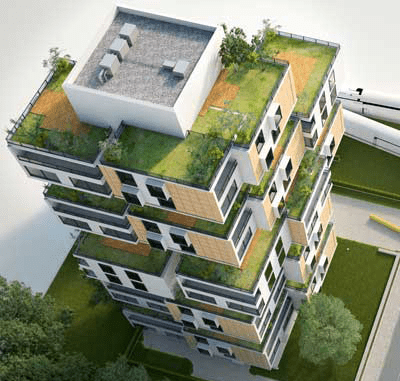Uma P
CEPT University, Ahmedabad, India
Corresponding Author: umaparch@gmail.com
Rashmin Damle
CEPT University, Ahmedabad, India
Cite this article
Highlights
- Study of thermal performance of Rammed earth and Laterite stone.
- Monitoring using hand-held instruments in a built environment.
- Rammed earth wall, due to thermal properties, has an overall 2°C lower surface temperature compared to laterite stone.
Abstract
Traditionally in coastal Karnataka, mud was used in residential construction, but due to its labour-intensive nature, the construction shifted to laterite stone in the mid-20th century. Presently, with the growing need for thermal comfort and interest in sustainable approaches, there is increased interest in traditional mud architecture. A study was conducted to understand how these two materials- Rammed earth and Laterite stone perform in their built environment in a warm and humid climate. The analysis of inner surface temperatures of the east wall showed that 45% of the temperature for rammed earth and 97% of the temperature for laterite stone were more than 28°C. 1°C difference in mean WBGT showed that the indoor spaces in rammed earth residences have lower heat stress compared to laterite stone. Additionally, cooling loads can be reduced by 10%, and surface temperature can be reduced by 2°C for rammed earth compared to laterite stone walls.
Keywords
Thermal Performance, Laterite Stone, Rammed Earth, Surface Temperature, WGBT.
References
- ASHRAE, “ANSI/ASHRAE Standard 55, Thermal Environmental Conditions for Human Occupancy,” ASHRAE, Atlanta, 2017.
- A. Lawane, R. Vinai, A. Pantet, J. H. Thomassin, and A. Messan, “Hygrothermal features of laterite dimension stones for sub-Saharan residential building construction.” J. Mater. Civ. Eng., vol. 26, (7), 05014002, 2014.
- L. Soudani, M. Woloszyn, A. Fabbri, J. C.Morel, and A. C., Grillet, “Energy evaluation of rammed earth walls using long term in-situ measurements.” Solar energy, vol. 141, pp. 70-80, 2017. https://doi.org/10.1016/j.solener.2016.11.002

 Bishal Thapa
Bishal Thapa





 Fred Sherman
Fred Sherman Sumedha Malaviya
Sumedha Malaviya Satish Kumar
Satish Kumar












 The three main global energy concerns of providing access to modern energy, enhancing the security of the energy supply, and minimising the impact of energy systems on the climate have an impact on both national and international energy governance. To develop solutions that address the many facets of these difficulties, however, a variety of actors and stakeholders must be included due to the complexity of the energy challenges.
The three main global energy concerns of providing access to modern energy, enhancing the security of the energy supply, and minimising the impact of energy systems on the climate have an impact on both national and international energy governance. To develop solutions that address the many facets of these difficulties, however, a variety of actors and stakeholders must be included due to the complexity of the energy challenges. Cities are responsible for more than 70% of the world’s energy consumption and 40% to 50% of its greenhouse gas emissions. Managing increasing urbanisation is a challenge, and nations must deal with the effects it will have on the environment in terms of energy and climate.
Cities are responsible for more than 70% of the world’s energy consumption and 40% to 50% of its greenhouse gas emissions. Managing increasing urbanisation is a challenge, and nations must deal with the effects it will have on the environment in terms of energy and climate. Our transition to a future with lower carbon emissions depends heavily on buildings. They are our places of residence, rest, and employment; they also account for around one-third of the world’s greenhouse gas emissions and nearly 40% of the world’s energy usage.
Our transition to a future with lower carbon emissions depends heavily on buildings. They are our places of residence, rest, and employment; they also account for around one-third of the world’s greenhouse gas emissions and nearly 40% of the world’s energy usage.